Discover the North East’s alien grasses and start identifying your own in the fifth instalment of a new series of blogs by NHSN Senior Naturalist, James Common.
In our last post, we explored some of the common and familiar grasses found in the arable fields. Now that we’ve covered those, it feels like the right time to shift our focus to an eclectic and intriguing group of alien grasses which while uncommon, are becoming more frequent in urban areas across the region.
These are species that typically reach our towns and cities either as garden escapes or as bird-seed aliens. The species highlighted are those most frequently encountered in pavements, walls, and waste ground near human habitation – at least based on my experience botanising around urban Newcastle.
If you happen to spot any of these species, please consider submitting a record to iRecord – every observation helps build a clearer picture of their distribution.
#27 Water Bent
Water Bent (Polypogon viridis) is by far the most abundant non-native grass found in urban areas of the North East. It is commonly seen growing in pavement cracks, walls, flowerbeds, and other disturbed soils and at first glance, can easily be mistaken for a Meadow-grass (Poa).
Water Bent has dense yet somewhat interrupted panicles of pale green to purplish flowers, giving the plant a much fuller, more clumpy appearance than the meadow-grasses. The individual spikelets are tiny – just 1.7–2.2 mm long – and very numerous, each containing a single floret with unawned lemmas.The leaves are relatively broad (2–10 mm), hairless, and slightly rough to the touch.
Overall, once you’re familiar with it, Water Bent becomes quite a distinctive little plant. The combination of dense flower heads and broad leaves is a useful indicator, though it’s easy to overlook or confuse with Poa on first encounter.

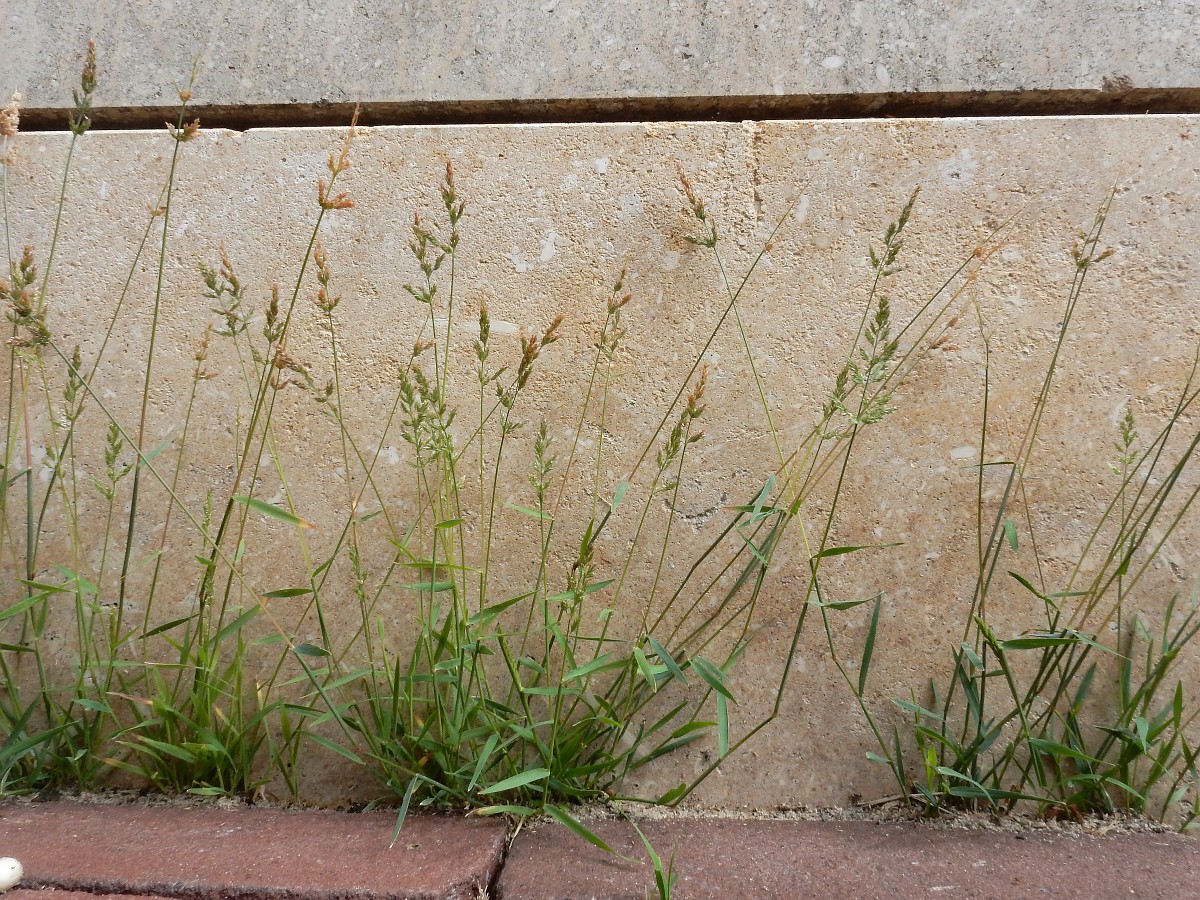
#28 Annual Beard-grass
A relative of Water Bent, Annual Beard-grass (Polypogon monspeliensis) is a rather rare but distinctive little grass occasionally found in urban areas as a birdseed alien.
An erect species, it can grow up to 80 cm tall and is characterised by a dense, oblong panicle with numerous silky awns and a pale yellowish hue. The leaves are flat and rough, with long, pointed tips, and the ligule is thin, membranous, and typically ends in a pointed, ragged tip.
Annual Beard-grass is native to certain parts of the UK and is typically found in dry areas of saltmarshes or other damp coastal habitats. However, its presence in the North East, particularly in urban environments, is almost always as an introduced alien. It has shown itself to be abundant in the back alleys of Heaton and may occur at further sites still.
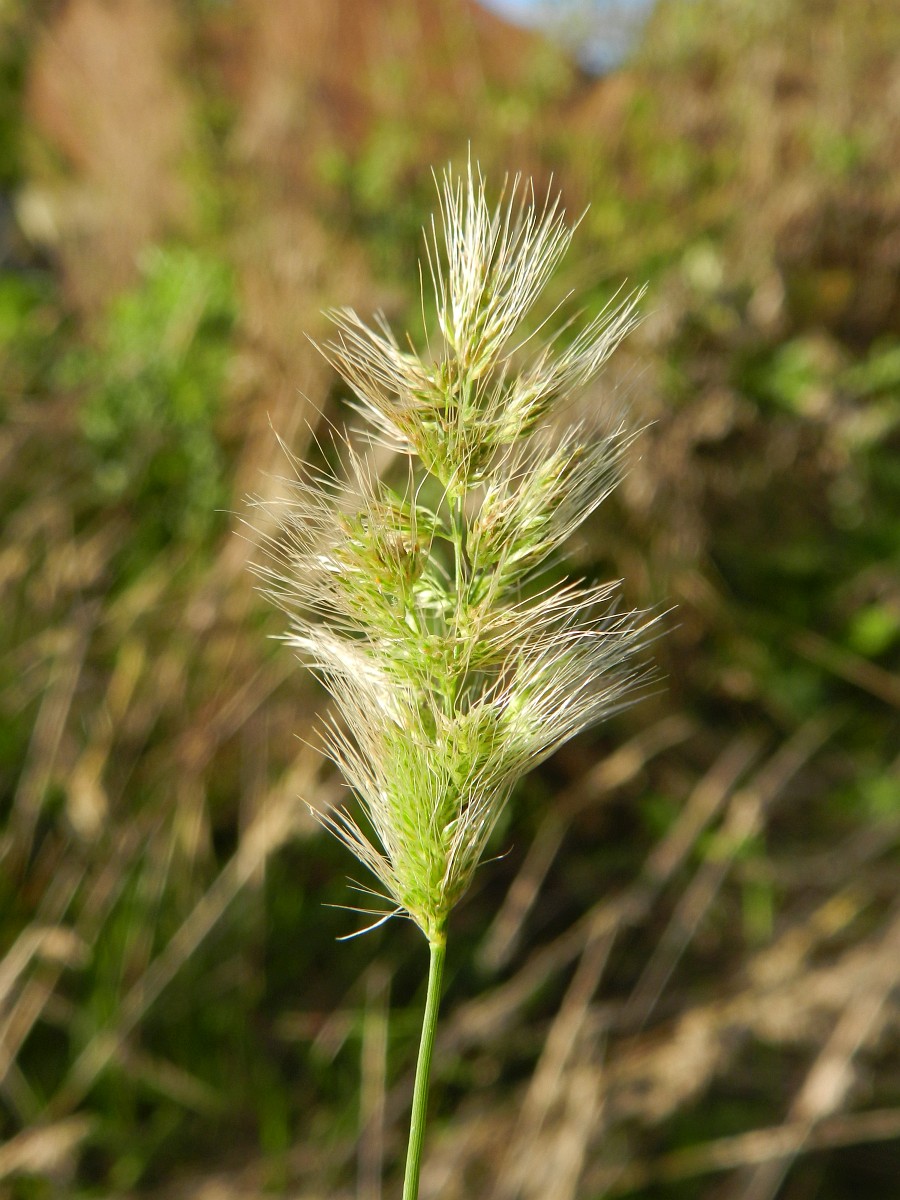
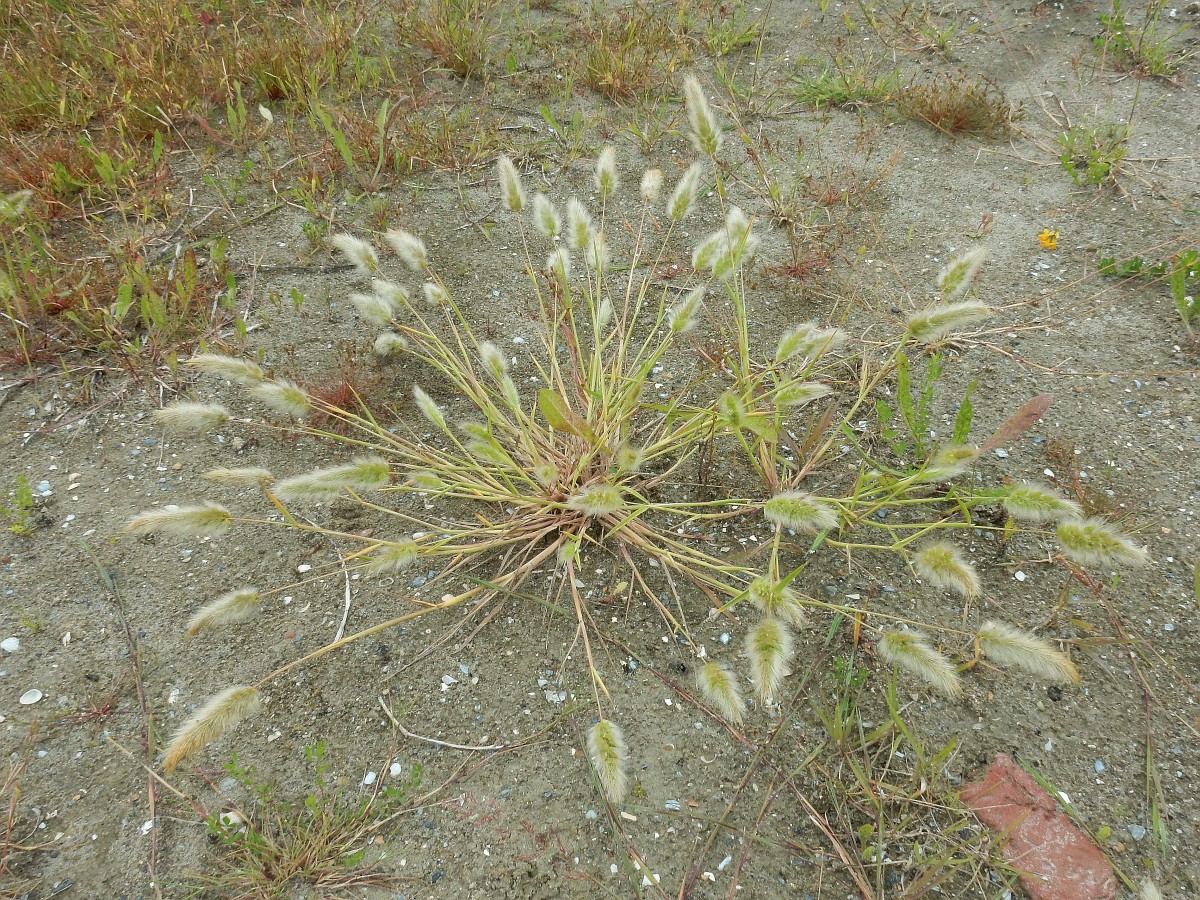
#29 Greater Quaking-grass
Greater Quaking-grass (Briza maxima) certainly lives up to its name, resembling other quaking-grasses but on a much grander scale. An annual species introduced from southern Europe, it has long been cultivated as a garden plant and is especially popular in cut flower arrangements.
This upright grass grows to around 60 cm tall and forms a tuft of flat, linear leaves. Its panicles bear large, flat, ovate spikelets that hang delicately from slender, arching branches – creating the distinctive ‘quaking’ movement in the breeze.
This species is by far the most abundant species of Briza found in urban areas and is the one most likely to appear in pavement cracks or at the base of garden walls near houses.
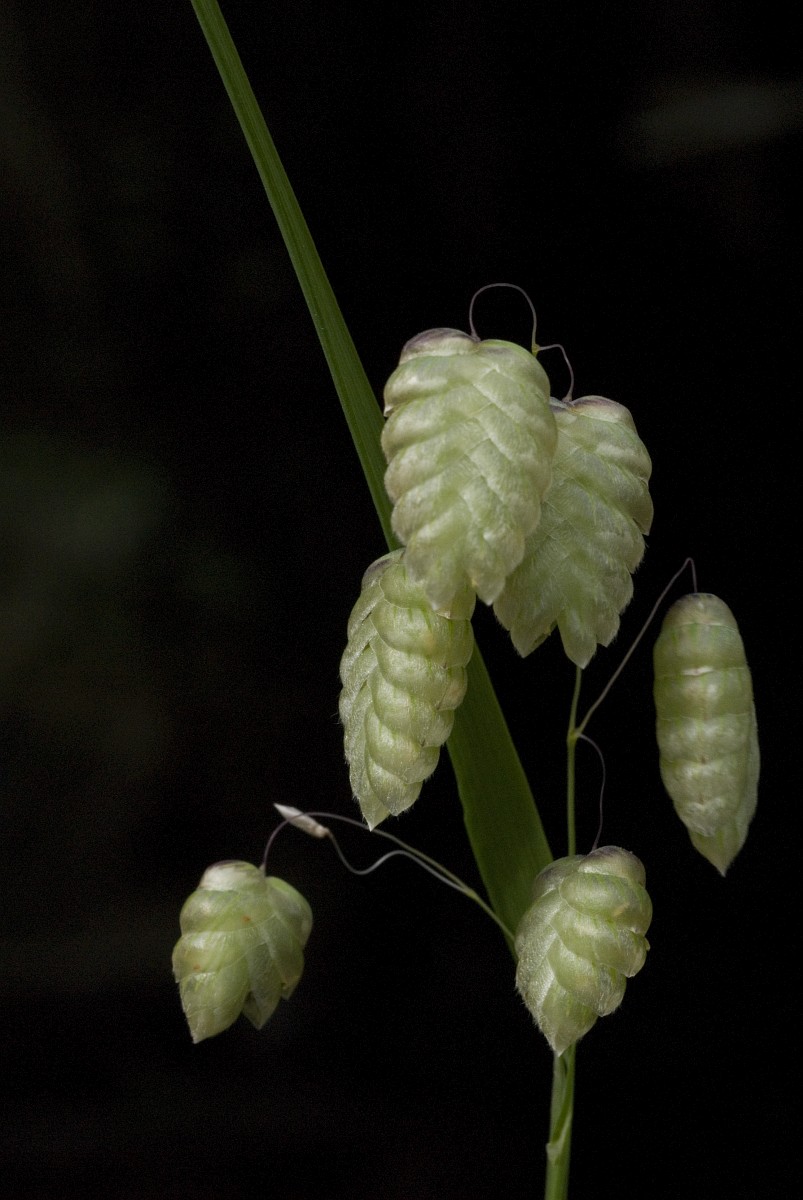
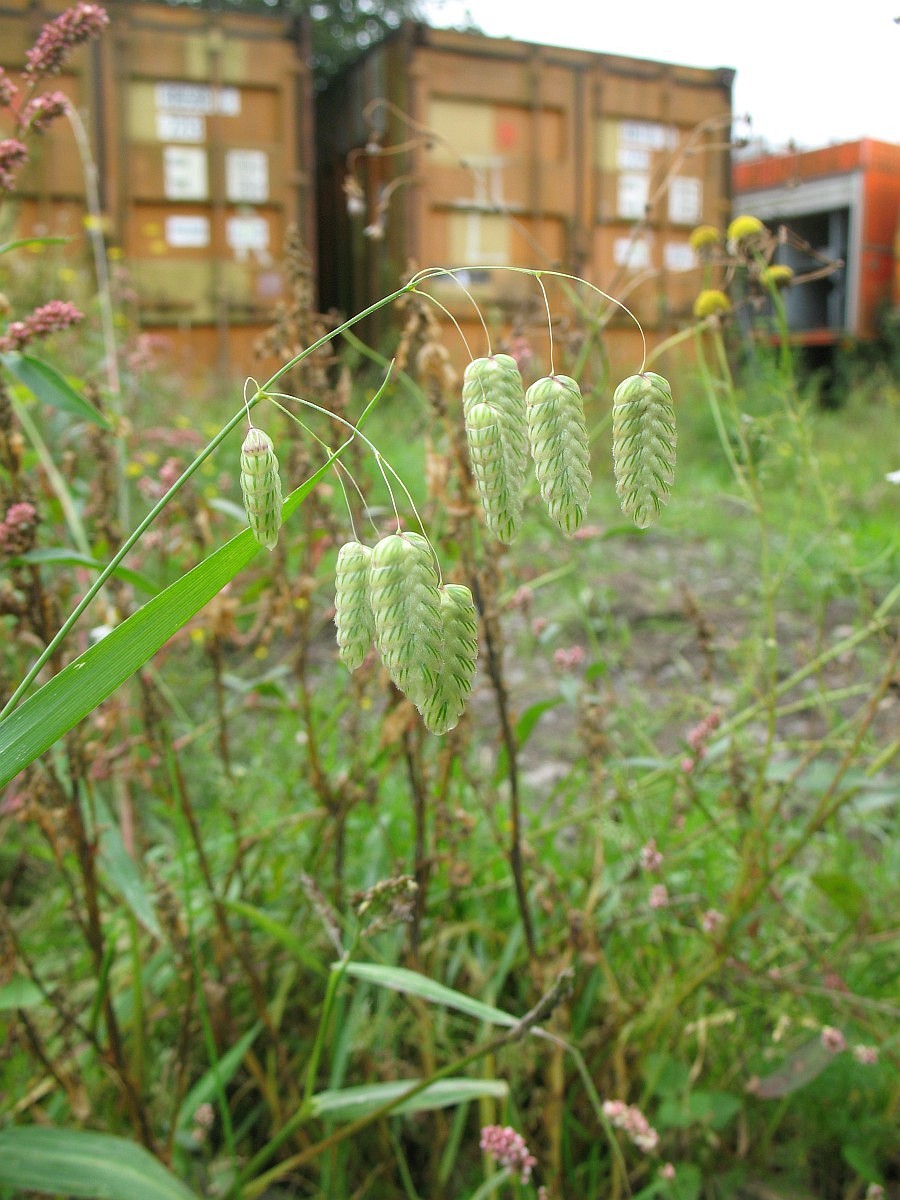
#30 Canary-grass
A casual weed of waste ground, walls, pavements, and areas where garden waste is dumped, Canary-grass (Phalaris canariensis) is an unmistakable species, most often appearing as a bird-seed alien or, in my experience, as an accidental discard around allotment sites.
This species is unlikely to cause much confusion. It has upright, terminal flower spikes that are cylindrical in outline, each bearing between 10 and 200 spikelets. If you look closely at the photos below, you’ll notice a distinctive striped pattern on the spikelets. Combined with its unique semi-circular glumes, this makes Canary-grass one of the easiest alien grasses to identify in the field.
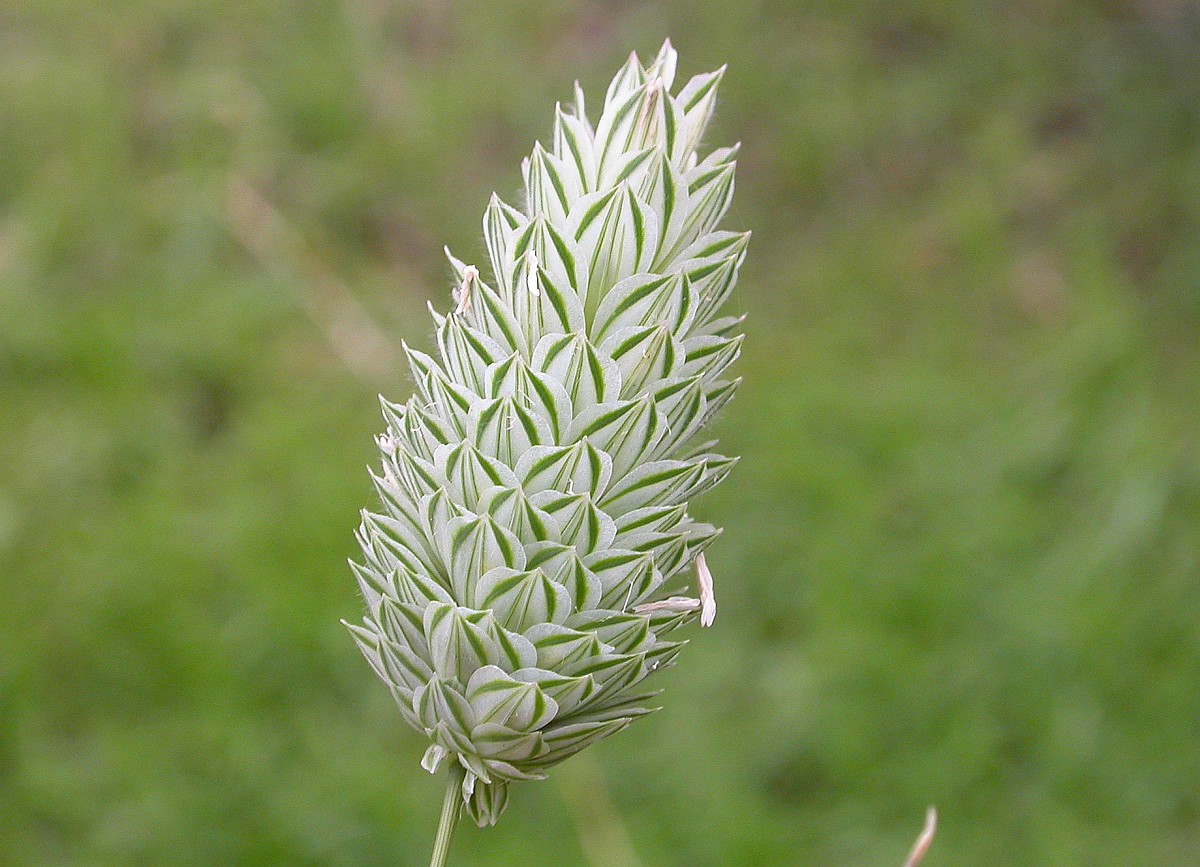
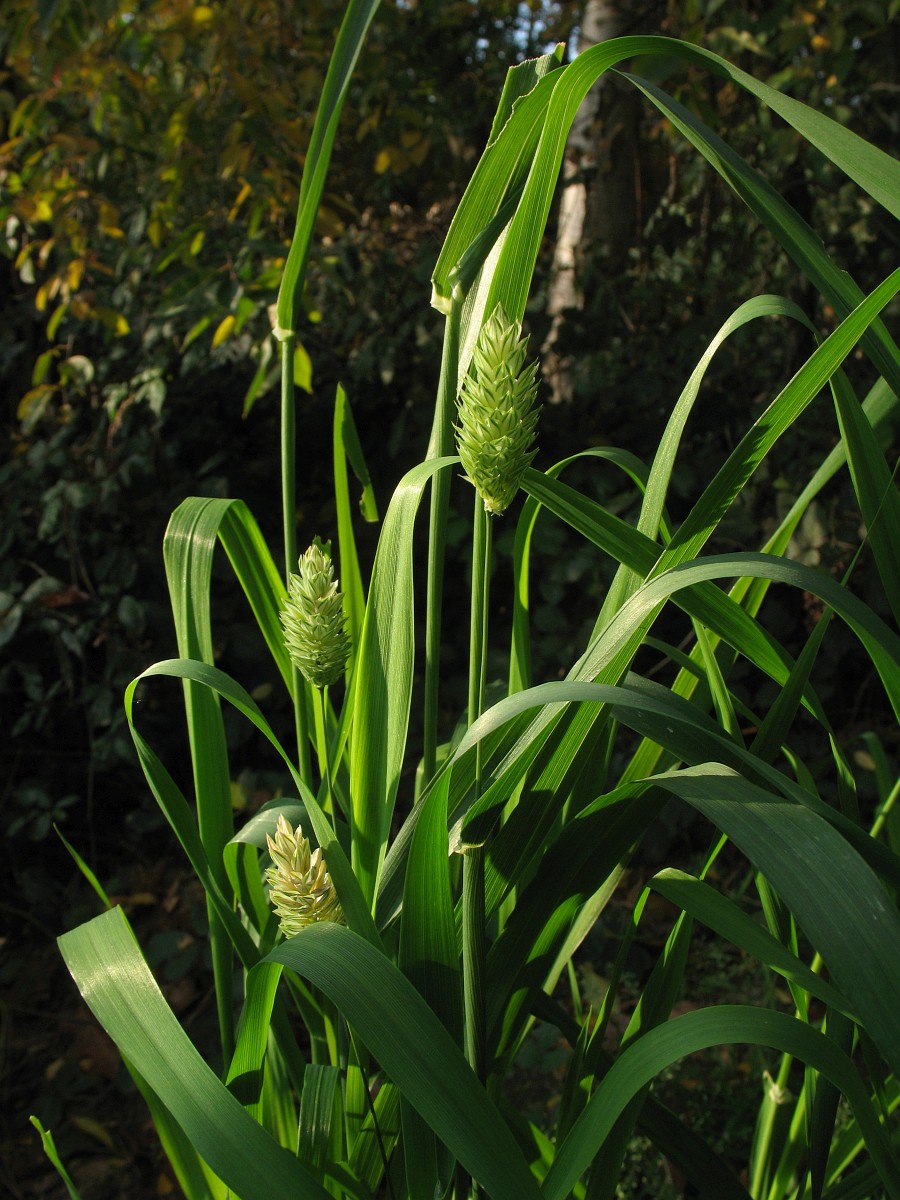
#31 Cockspur
Also known as Barnyard Grass, Cockspur (Echinochloa crus-galli) is an introduced annual species often found growing where bird seed has been spilled.
A tall grass, it can reach up to 120 cm in height and typically forms loosely tufted clumps of upright stems, which are distinctively flattened at the base. The leaves are broad, ranging from 10 to 20 mm wide, and feature a prominent pale midrib.
The spikelets are 3-4 mm long and are borne on one-sided branches. These give the inflorescence a somewhat ‘messy’ appearance, due to the presence of long awns on the florets and the irregular arrangement of the spikelets. The seed heads are also quite distinctive and are often purplish in colour, with large, millet-like seeds.
Though Cockspur is an accidental introduction, it has become a widespread in parts of Britain, especially in Southern England. Nonetheless, it does turn up from time to time in our region.
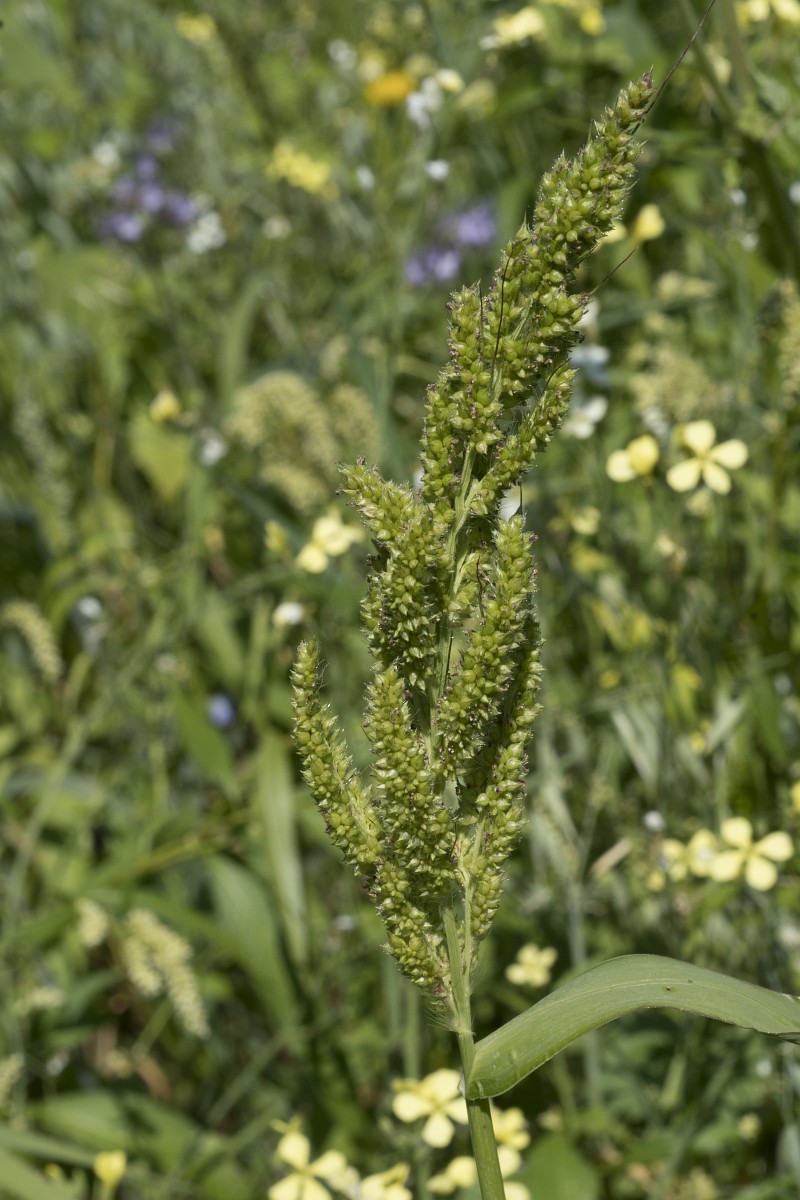
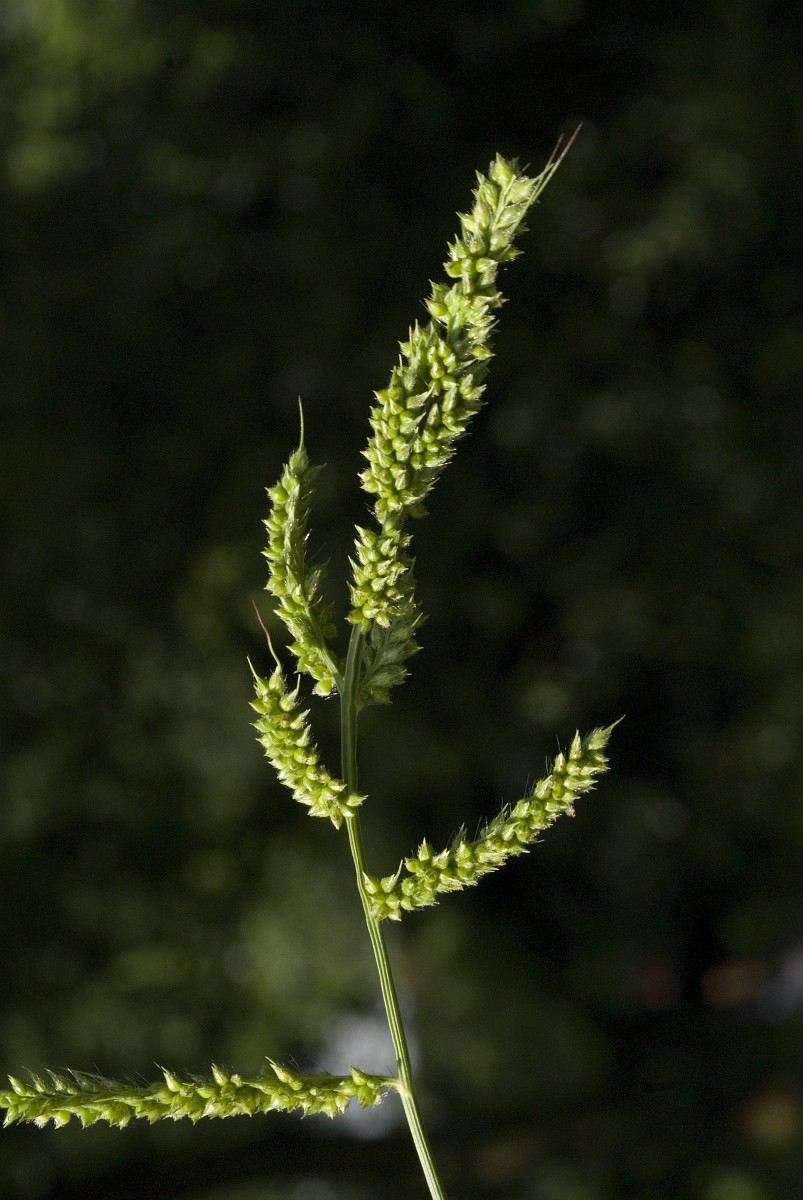
#32 Rescue Brome
A rare species for now, but one that’s beginning to show signs of colonisation in parts of Tyneside and may yet spread more widely. Rescue Brome (Ceratochloa cathartica) is a tall, striking grass native to Central and South America. In the UK, it is believed to arrive occasionally as a contaminant in spilt grain or birdseed.
Compared to other bromes that turn up in pavements and waste ground, this species is quite distinctive. It has broad leaves at 4-10 mm wide which are lightly hairy, and rounded, variably hairy leaf sheaths. The ligule is relatively long (4-5 mm) and often appears somewhat tattered.
The most helpful feature is the spikelets: they are strongly flattened, giving them a noticeably compressed feel. Each spikelet contains long lemmas (10–19 mm) with 9–11 pale veins. These broad, wedge-shaped spikelets stand out clearly from more common species like Barren Brome (Anisantha sterilis).

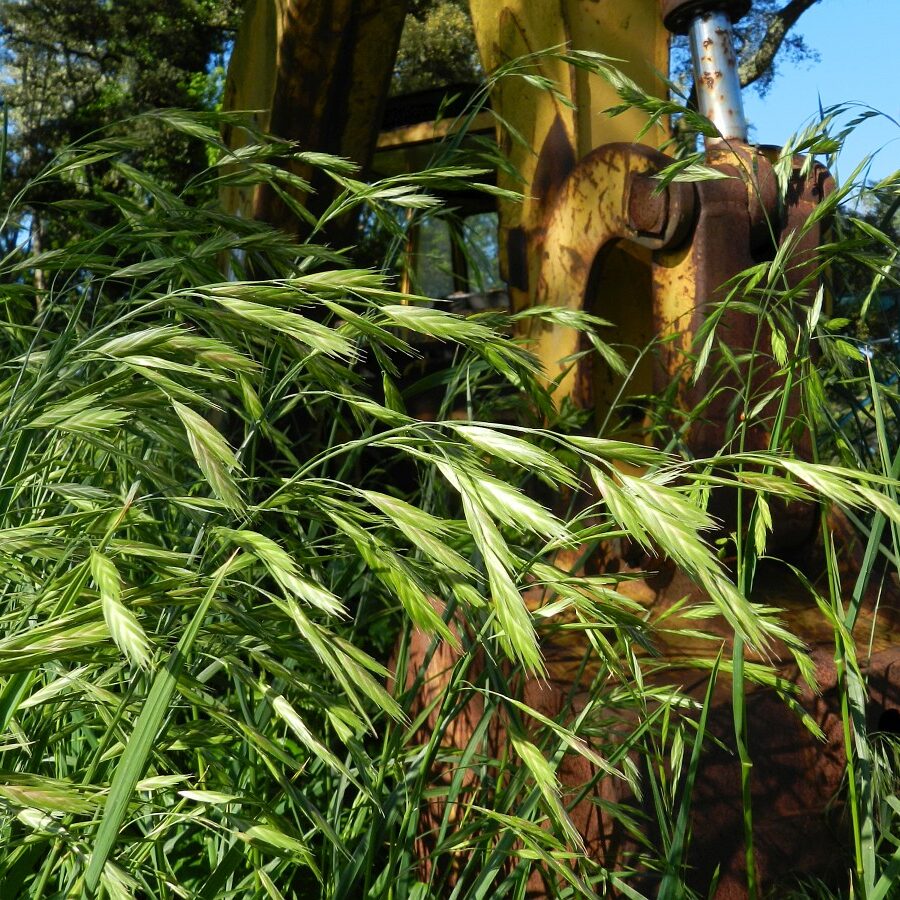
#33 Hare’s-tail
A lovely one to end on, Hare’s-tail (Lagurus ovatus) is a delicate and unmistakable grass.
A garden escape, this small and graceful species occasionally turns up in pavements and waste ground near habitation. It is unlikely to be confused with anything else thanks to its distinctive and ornamental flowerheads.
The inflorescences are fluffy, ovoid, and rather reminiscent of a rabbit’s tail – hence the name. These “tails” are usually pale green or white when fresh, gradually maturing to a light buff or cream colour. On close inspection, you’ll notice many fine awns extending from the cluster, adding to its soft, feathery appearance.
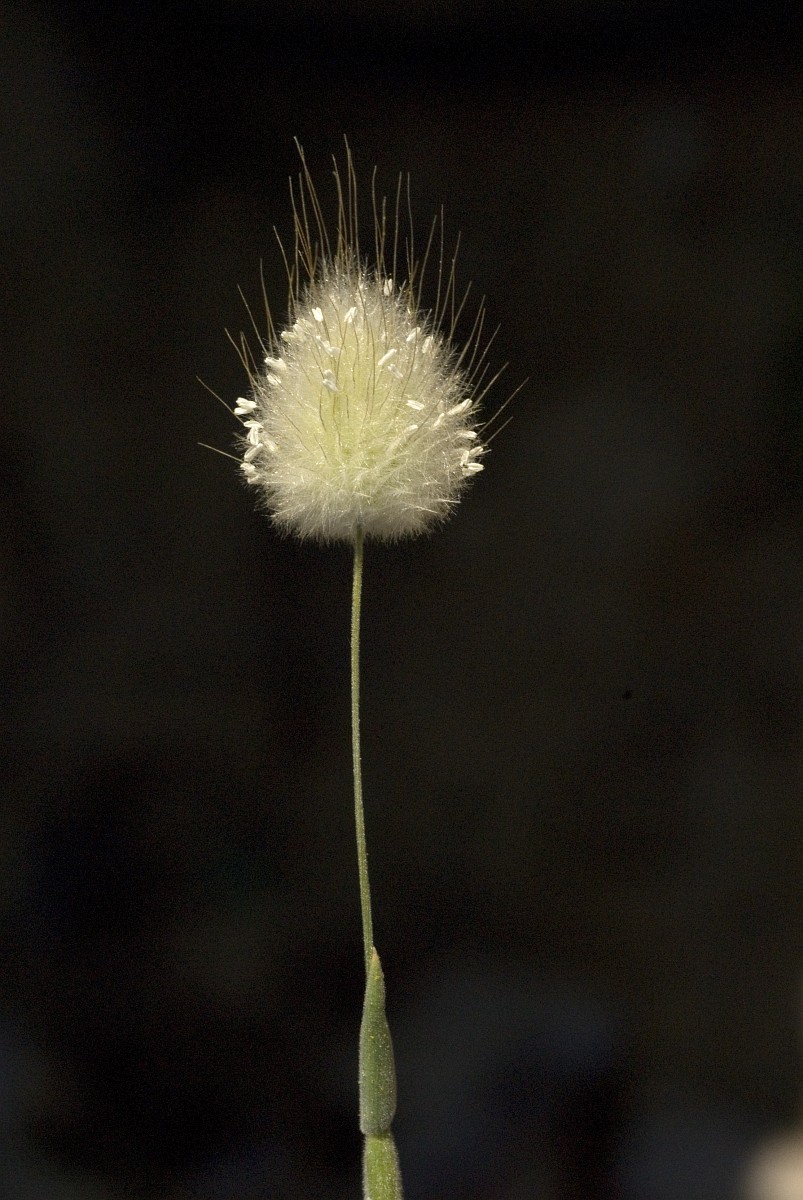
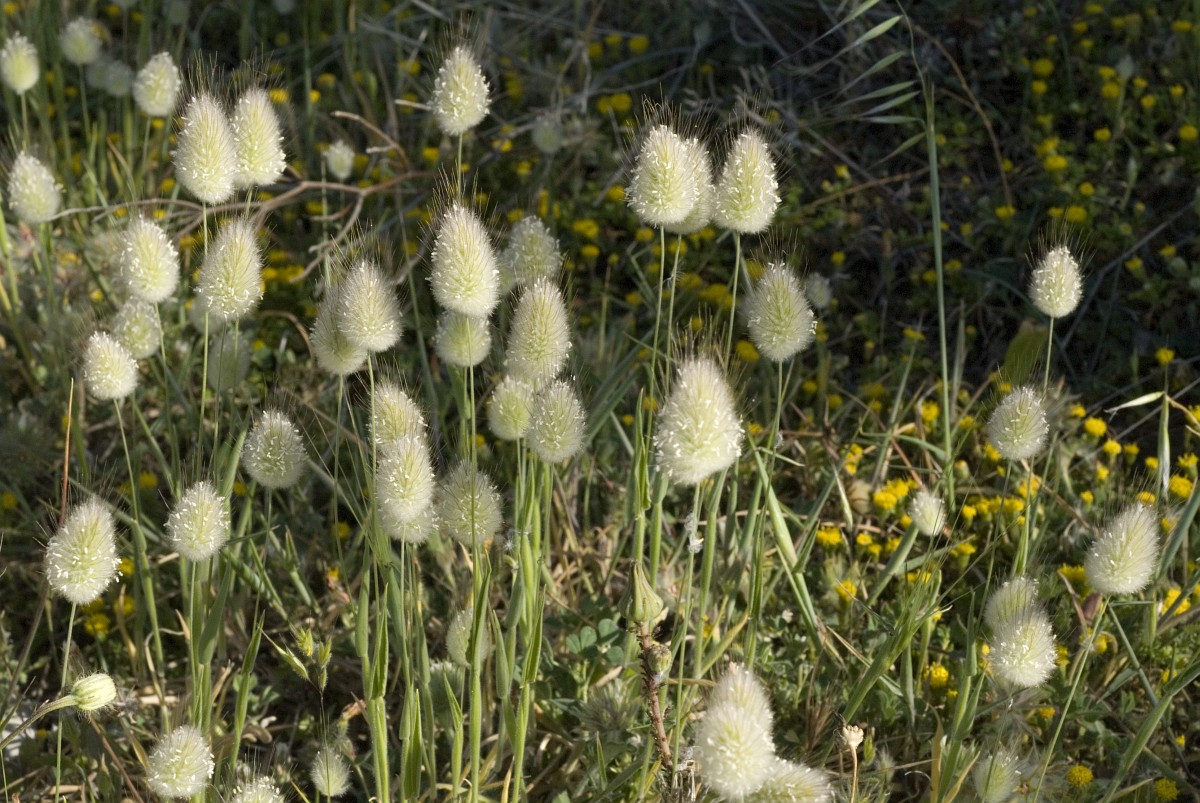
And that concludes our round-up of some of the North East’s more distinctive alien grasses. Of course, there are other species out there, but the ones featured here should offer a solid starting point for anyone keen to explore further.
With 33 grass species covered so far, this may mark the end of the current blog series—but if time allows, we hope to return with a look at some of the region’s rarer and more special grasses. Who knows? We might even reach a satisfying total of 40 species.